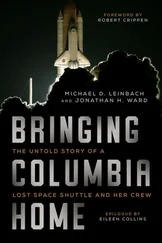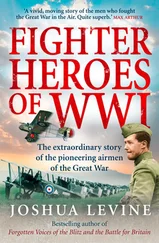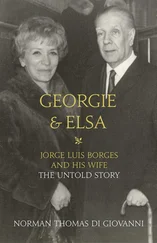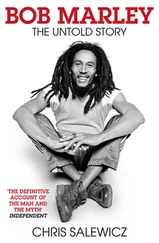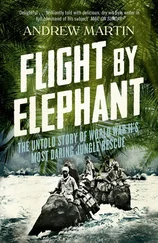Early in the morning the Blowpipe party climbed up a prominent peak nearby to set themselves up for the day’s shooting. It was to turn out to be a duck shoot in which the ducks won. From their hide on the hill they had a magnificent view of the enemy aircraft as they banked, turned, dived and pulled up again, in their efforts to strafe our defences. The first Blowpipe missile roared majestically upwards but wide of its mark. From then on the firing point had been identified. Within a few minutes the colonel had been slightly wounded and several Mujahideen hit, but the captain kept the Blowpipe firing. In all thirteen missiles were fired before a direct hit severely wounded the captain and his JCO assistant, and killed several men nearby. Not a single missile had hit an aircraft. For me it was the final proof that this weapon system was useless on the battlefield. We had said so from the outset, and now it had failed us at a critical juncture of a desperate battle. A British artillery officer who saw the Blowpipe in action in the Falklands excused its poor performance by saying that at least it frightened pilots into veering off and leaving the firer alone. This was not our experience, and anyway we needed to knock them down, not frighten them.
Our team was evacuated under the directions of my colonel, back to a military hospital in Pakistan. Weeks after the incident I asked the captain why he had not tried changing his firing point once it had been located by the enemy. It was the obvious thing to do as both he and I knew. His reply was interesting. He had felt that to move would have damaged his reputation for courage in the eyes of the Mujahideen around him. They showed no inclination to move, they intended to stand their ground under fire, and the young officer felt that the honour of the Pakistan Army was at stake, so he stayed until hit. He was later decorated by the President.
With Haqqani out of the fight, there was even less coordination of the defences, and I was alarmed at the series of conflicting and worrying reports that came in daily. I urged General Akhtar to let me go forward, but he refused. Meanwhile I arranged for all the military representatives of the Parties to go personally to Zhawar to organize operations aimed at the enemy’s rear areas and Khost airfield. The ferocity of the fighting may be judged by the fact that the barrels of many of our AA guns had been worn out, and there were instances of hand-to-hand combat.
Again I pleaded with General Akhtar to let me at least go up to the border, as I felt my presence close to the fighting would be a steadying influence, and that from there I could coordinate things. After all, the enemy were now within 3 kilometres of Pakistan, and for all we knew might come across the frontier. On my assurance that I would not venture into Afghanistan, he let me go. The day I reached Miram Shah Zhawar fell. Soviet and Afghan commandos secured the tunnels and set about completing the destruction of the base. The Mujahideen had eventually been forced back in some of the toughest fighting of the war in which they had used every weapon in their armoury, including several captured tanks.
At Miram Shah I met Hekmatyar and Khalis who had gone to the border for the same purpose as myself. The news was bad, but large numbers of Mujahideen were still in the area, and not all the bases had been lost.
Hekmatyar agreed to lead in reinforcements that night to secure his base. To try to find out the exact situation I went to a suitable vantage point from which I could observe enemy movement around Zhawar. I gazed long and hard through my binoculars, but saw nothing. There was no enemy in Zhawar. I hurried back and spoke to Haqqani, who was recovering well, telling him that Zhawar appeared unoccupied. He ordered a Commander to take in a patrol that night.
During the night I watched an impressive 107mm rocket barrage by Hekmatyar’s men on to suspected enemy rear areas. Others joined in, confirming that the Mujahideen were far from defeated. The next day it was confirmed that the enemy had withdrawn. Within 48 hours Zhawar was back in our hands.
The Kabul regime celebrated a major victory. According to radio broadcasts hundreds of Mujahideen bunkers and fortifications had been destroyed; thousands of weapons and mines captured, and millions of rounds of ammunition secured. According to their account we lost 2,000 dead and 4,000 wounded. To say that this propaganda stretched the truth would be a serious understatement. Mujahideen losses at Zhawar did not exceed 300 killed, together with a few truck-loads of arms and ammunition. Although Zhawar base fell, other nearby strongpoints did not, and within a few hours the enemy pulled back to Khost, making no attempt to hold the ground they had won. We had shot down thirteen helicopters and aircraft, captured over 100 Afghan soldiers and killed or wounded about 1,500.
Our decision to fight a conventional defensive battle at Zhawar came under great criticism. We were accused of violating the principles of guerrilla war. As I have explained earlier, we had valid reasons for developing Zhawar and Ali Khel into strong points, and holding them if attacked. Our conduct of the war was dependent on these operational and logistic jump-off points After the Zhawar battle we rebuilt the base and continued to use it throughout the rest of the campaign. It was Zhawar that so impressed Mr Wilson when I took him there about a year later. As far as I know it continues to function as an essential part of the Mujahideen’s military strategy.
By all this I do not mean that we had not been dealt a severe tactical blow. We had, but it was not as serious as was made out at the time. I have no doubt that the Mujahideen would have repulsed all the assaults, with fewer losses, had two matters been resolved beforehand. First, if the Commanders had properly constructed their defences, ensured overhead cover and dug in with enthusiasm in the preceding weeks, the Mujahideen would not have received such a bloody nose. Second, and more importantly, if the US and Pakistan had not procrastinated for so many years over supplying us with an effective anti-aircraft weapon, we would assuredly have beaten off the attack with comparative ease. The Mujahideen, properly dug in at Zhawar with the Stinger, would have been unbeatable. Of that I have no doubt.
Wonder Weapons — Gunships versus Stingers
“Aeroplanes are most effective against morale. They frighten; they
exhaust; they break nerves. They do not, usually, in fact, kill many men.”
Captain Tom Wintringham, British guerrilla warfare instructor, 1939.
ON 25 September, 1986, some thirty-five Mujahideen crouched excitedly in the scrub on a small hill only a kilometre and a half NE of Jalalabad airfield runway. It was mid-afternoon and they had been hidden in this position for over three hours. They had done remarkably well to get so close to the strip undetected as they were now well inside the Afghan defences. The Commander, Engineer Ghaffar, could clearly see the soldiers in the perimeter posts around the runway, just inside the boundary fence. At either end of the strip were several tanks and APCs. Ghaffar had exceeded his instructions in getting so close, but he knew the area intimately, and his reconnaissance had confirmed a good covered approach that was useable even by day.
I had personally selected Ghaffar for this operation, together with another Commander called Darwesh, who had been assigned a similar task near Kabul. For us it was a moment we had been anticipating for four years, a chance to confront our most hated opponent of the war on equal terms. These two Commanders had been entrusted to attack the helicopter gunship, or indeed any aircraft, with the US Stinger anti-aircraft missile. On this first occasion it had developed into an outright competition between these two Commanders. Back at Rawalpindi, where they and their teams had been trained, they had challenged each other as to who would get the first kill. To encourage their enthusiasm I had gone along with their game, to the extent of allowing Darwesh a two-day start on his rival as he had the longer journey to Kabul. It was one of the crucial moments of the war. After years of being unable to strike back effectively at the enemy in the air, the Mujahideen had at last received a weapon worthy of their spirit.
Читать дальше


